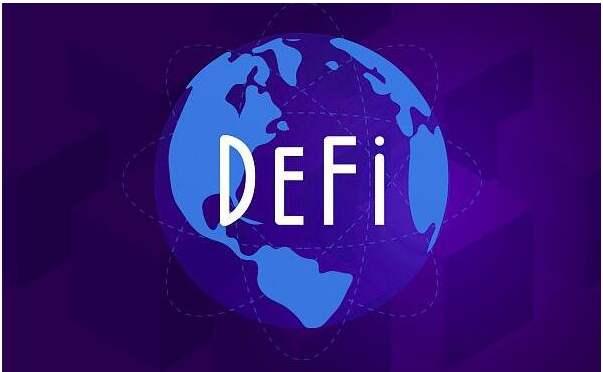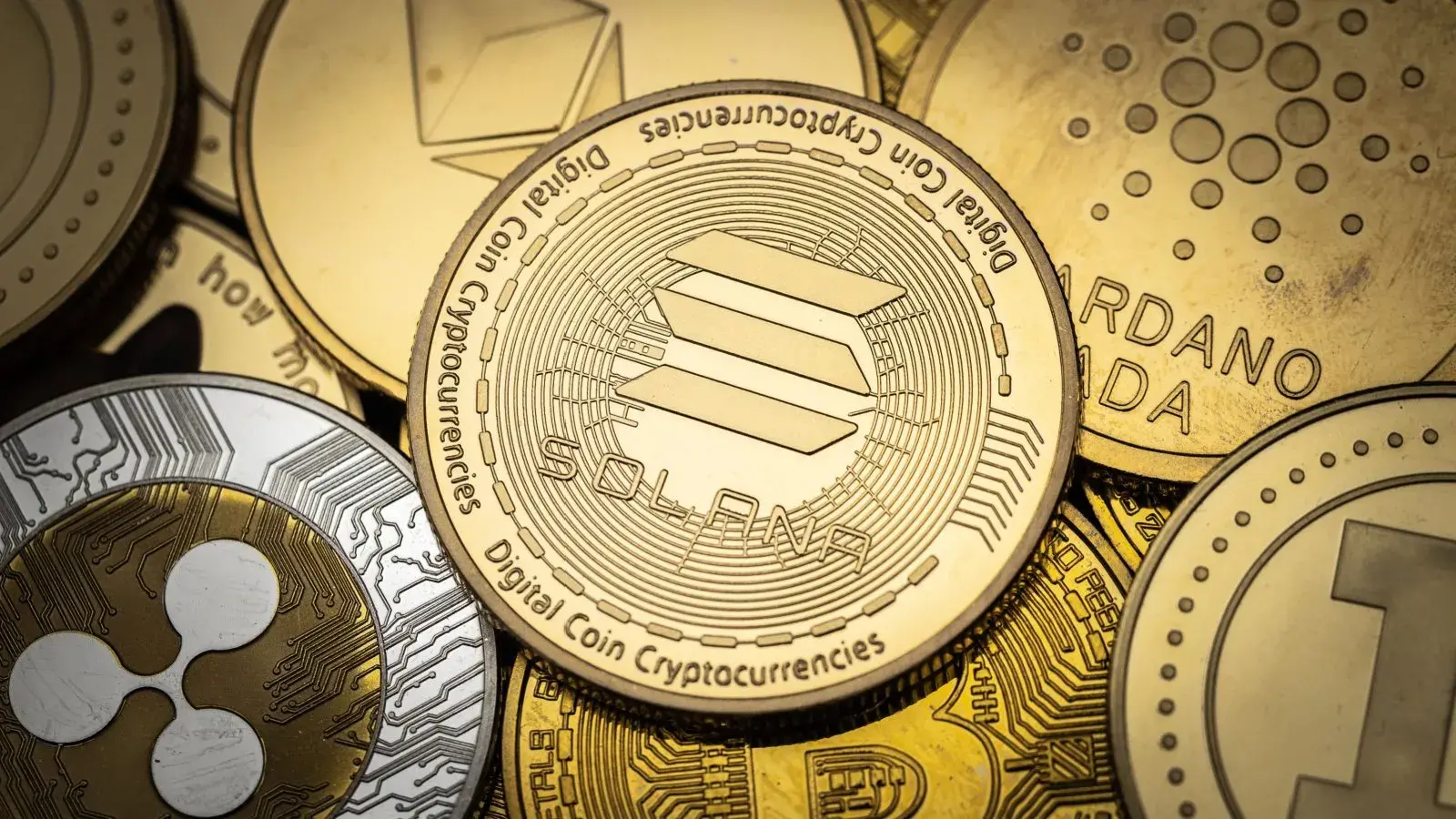How is the DeFi ecosystem on BSC and Heco? Let's let the data speak
This article was published by HashKey Capital, author: Cao Yixin.
The Phenomenon of DeFi Ecosystem Diversion
Since the beginning of 2021, the development trend of the DeFi ecosystem on Ethereum's public chain has slowed down, with few phenomenal applications emerging. The total locked value (TVL) has fluctuated between $35 billion and $45 billion, and the high transaction fees and poor scalability of Ethereum's public chain as the underlying infrastructure have been repeatedly criticized.
 Figure 1. Growth curve of the DeFi ecosystem scale on Ethereum (data from Defipulse)
Figure 1. Growth curve of the DeFi ecosystem scale on Ethereum (data from Defipulse)
In fact, excluding the upward market price factors, the TVL measured in ETH has started to decline since the fourth quarter of last year. At the same time, the Binance Smart Chain (BSC) and Huobi Eco Chain (Heco), which launched in the third and fourth quarters of last year, have gradually established their DeFi ecosystems and have taken the opportunity to attract users from Ethereum.
In the first quarter of this year, the popularity of DeFi applications on these two chains has continued to rise. According to data from DeFiBox (March 15), the TVL has reached $13.32 billion (BSC) and $6.27 billion (Heco) respectively. The TVL of the star projects Pancake and MDEX in the DEX sector has reached a comparable level to Uniswap; from the daily trading volume data (as shown in Table 1), Pancake and MDEX are an order of magnitude higher than Uniswap.
From formula (1), we can see that the contribution of daily trading volume increment can be decomposed into the improvement of trading processing efficiency and the increment of average single transaction volume. The following will estimate that the actual TPS of the BSC and Heco chains has increased by 2.1 times and 2.8 times relative to Ethereum, respectively, and without considering the existence of false transactions, the average single transaction volume has increased by approximately 2.1 times and 3.6 times.

 Table 1. Comparison of representative DEX market sizes of three public chains (March 15)
Table 1. Comparison of representative DEX market sizes of three public chains (March 15)
From the specific distribution of DeFi projects (as shown in Figure 2), the DEX and lending sectors are the more mature businesses in the DeFi ecosystem, with projects on Ethereum's DeFi ecosystem primarily focused on these two types of businesses. Although the number of lending projects is small, the average locked value per project is the highest, showing a significant head effect; conversely, the derivatives sector has a larger number of projects but lower single project locked values, which indicates a high level of competition in this sector and reflects that the derivatives track in the current DeFi ecosystem still faces many obstacles and has not yet formed a considerable scale.
Interestingly, the distribution of the number of projects and locked values for DEX, lending, and yield aggregation projects on the BSC chain is similar to that of the Ethereum DeFi ecosystem, albeit on a smaller scale; while the projects on the Heco chain are mainly DEX and yield aggregation, with low single project locked values. The development of the derivatives sector on both BSC and Heco is relatively limited.
 Figure 2. Project distribution across sectors in the DeFi ecosystems of three chains (data from DeFiBox)
Figure 2. Project distribution across sectors in the DeFi ecosystems of three chains (data from DeFiBox)
Comparison of Technical Indicators
The aforementioned diversion phenomenon effectively reflects the existing performance limitations of Ethereum's public chain in supporting the DeFi ecosystem's advancement towards larger-scale applications. Two key performance indicators here are:
TPS (related to business operation efficiency)
Gas fees (related to business operation costs)
The existence of these two performance bottlenecks on Ethereum's public chain is predicated on two conditions: it first ensures a high degree of:
Decentralization
Security
In contrast, the DeFi ecosystem operating on BSC or Heco chains is backed by leading exchanges and developed based on their user bases, improving scalability at the expense of decentralization, providing DeFi players with a low-fee, non-congested trading venue.
TPS Indicator Comparison
In terms of TPS alone, both BSC and Heco chains rely on Ethereum's open-source technology and have modified the consensus algorithm to reduce the average block time from 15 seconds to 3 seconds, while increasing the Gas Limit of each block by 2.4 times. It is important to note that the Gas Limit of Ethereum and Heco chains fluctuates with the mining difficulty adjustment mechanism, while the Gas Limit of the BSC chain currently remains around 30 million. We can estimate the actual TPS limits that each chain can achieve through the Gas Limit per block, average Gas consumed per transaction, and average block time (see formula (2) and data in Table 2).

Based on the statistics from the blockchain explorer over the past 30 days (February 13 to March 14), we can estimate the average Gas consumed per transaction through the daily average transaction count and daily average Gas consumption. If we estimate based on Ethereum's current average Gas consumption per transaction (64K), the TPS of BSC and Heco can increase from 13 to 156. However, in reality, the average Gas consumed per transaction on these two chains is much higher than 64K; if we take BSC's average (135K) as the standard, the actual bearable TPS is halved.
 Table 2. Comparison of technical indicators of three public chains (2021-3-15)
Table 2. Comparison of technical indicators of three public chains (2021-3-15)
On the other hand, by analyzing the daily average Gas usage rate, we can detect the congestion situation of each chain. Compared to Ethereum running at full capacity, the current Gas usage on BSC and Heco chains has not yet reached full capacity, so there is no congestion experience. However, the actual supported TPS data indirectly reflects that these two blockchains can only support a very limited ecosystem scale, facing the same scalability issues that Ethereum needs to address for handling more complex smart contract-related transactions.
Blockchain Usage Cost Analysis
Running and maintaining DeFi businesses on the blockchain incurs certain costs, and here we only discuss costs attributable to the blockchain itself.
One-time Costs
One-time costs may include Dapp development, debugging, and maintenance upgrade costs. When comparing the usage costs of different blockchains, we focus on migration costs, which are the additional costs incurred by project parties in deploying and maintaining Dapps on a target chain due to differences in underlying technology. Since BSC and Heco directly port Ethereum's underlying technology and interface standards, the migration costs for developers are very low, motivating DeFi project parties to expand their businesses to new platforms at low costs to attract more user traffic. For Ethereum's DeFi users, the learning and integration barriers are also relatively low.
Recurring Costs
On the other hand, the recurring costs required for operating businesses on the blockchain are the on-chain transaction fees, which mainly correspond to the computational, storage, and bandwidth resources required for miners to achieve consensus and verification. The Ethereum yellow paper provides a very detailed fee standard, with different types of operation instructions corresponding to different amounts of Gas consumed. Currently, there is no public information indicating that BSC and Heco chains have modified this fee model, so we assume they have adopted the same fee model.
From the data in Table 2, the average Gas consumed per transaction on BSC and Heco over the past month is 2 to 3 times that on Ethereum. A reasonable explanation is that BSC and Heco primarily serve complex transactions that interact with smart contracts within the DeFi ecosystem, which require more Gas consumption, while Ethereum, in addition to supporting DeFi businesses, has also been providing payment network services composed of simple transfers (21K Gas).
By roughly counting the number of simple transfer transactions within 500 transactions across the three chains during the same time period, we can verify this point (Ethereum 106 transactions, BSC 17 transactions, Heco 7 transactions).
The transaction fees for each transaction on these three chains are calculated using the following fee model:

Where GasUsed is the actual amount of Gas consumed by each transaction, which is only related to transaction complexity; GasPrice is the cost that the transaction sender is willing to pay for each unit of Gas, also known as "gas fee," and this cost is measured in the functional token of the blockchain. Therefore, to obtain the transaction fee in USD, it must be multiplied by the market price of the functional token UtilityTokenPrice.
As shown in Table 3, the differences in the average "gas fees" and the USD prices of functional tokens across the three chains lead to significant variations in the fees users need to pay for a blockchain transaction consuming the same blockchain resources (for a simple transaction consuming 21K Gas, the average fees across the three chains range from a minimum of $0.0024 to a maximum of $5.89). In subsequent research reports, we will further analyze the attribution of transaction fees and explain their rising logic.
 Table 3. Comparison of average transaction fees for simple transactions across three chains over the past 30 days (February 14 to March 15)
Table 3. Comparison of average transaction fees for simple transactions across three chains over the past 30 days (February 14 to March 15)
The "Sandbox" of the DeFi Ecosystem
Although the comparison of technical indicators shows that exchange chains do not exhibit qualitatively superior advantages beyond low fees, they can still find their unique positioning in the market.
From the current development perspective, exchange chains are more suitable to act as a "sandbox" for the development of the DeFi ecosystem. This "sandbox" efficiently mimics Ethereum's DeFi ecosystem, seamlessly integrating with interaction tools familiar to DeFi users, such as Metamask, while significantly lowering participation thresholds and transaction costs. Additionally, it has a large user base, mature promotional channels, and a one-stop trading platform, which may have long-term appeal for project parties and low-net-worth users needing low-cost development and testing of products.
Its disadvantage lies in the fact that, in the absence of mature cross-chain channels, the asset entry and exit points for BSC or Heco are primarily controlled by centralized exchanges like Binance or Huobi. Participants must complete asset cross-chain transfers through withdrawal and deposit operations on centralized exchanges.
Theoretically, exchanges act as centralized hubs for asset circulation, providing a layer of risk isolation protection for the safety of funds on their respective chains. In cases of project parties running away or hacking attacks, they can promptly block the inflow of illicit funds into the exchanges for laundering. However, this also makes the asset attributes within the ecosystem heavily reliant on the credit of exchange redemption tokens. In fact, several incidents of project parties running away have occurred without proper handling. Once the market forms mature decentralized asset cross-chain circulation channels and a multi-chain coexistence ecosystem model, achieving centralized endorsement will require the introduction of on-chain review mechanisms; otherwise, the "sandbox" environment will still be subject to market evaluation and scrutiny under unified public chain standards, and the so-called standards may not be limited to the technical level.
Summary and Reflection
In summary, Ethereum's public chain is running at full capacity to support the development of the DeFi ecosystem, but it has once again exposed the unresolved bottleneck issues under the trials of DeFi applications. Exchange chains have taken advantage of this situation, using temporary measures to attract traffic while failing to address the root problems.
Currently, the financial services supported by smart contracts are still very simple. In the long run, achieving the performance indicators required for ideal DeFi services goes far beyond this. We look forward to the implementation of technical solutions that truly address scalability issues and await whether technologies such as Layer 2 and Ethereum 2.0 can bring qualitative changes.










